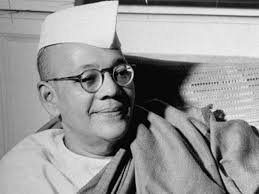The partition of Bengal in 1947 remains one of the most contentious and debated chapters in Indian history. This division was not merely a political maneuver but a reflection of deep-seated communal tensions, historical grievances, and demographic shifts. This article seeks to present an unvarnished account of the events leading to the partition, the actors involved, and the aftermath that reshaped the subcontinent.
Hindu Support for Partition

In 1947, the Hindus of Bengal, particularly the educated Bengali-speaking community, overwhelmingly supported the partition of Bengal. This sentiment was captured by a survey conducted by Amritbazar Patrika, a reputable newspaper of the time, which revealed near-unanimous support for the division among this demographic. The desire for partition was fueled by a decade-long experience of being a minority under Muslim-dominated legislative control, which saw the ascendancy of three Muslim Prime Ministers from 1937 to 1947. The period was marked by significant communal strife, culminating in the Great Calcutta Killing of 1946, orchestrated by Prime Minister Suhrawardy, infamously known as the Butcher of Calcutta.
The Role of Gopal Pantha and Bengali Resistance

During the Great Calcutta Killing, Bengali Hindus faced unprecedented violence. However, they did not remain passive victims. Gopal Pantha, a prominent figure in the resistance, along with other Bengali Bahubalis (strongmen), actively fought against Suhrawardy’s forces. Their efforts were instrumental in pushing back the jihadi aggression and safeguarding the Hindu community in Calcutta. This period also saw the involvement of Sheikh Mujibur Rahman, later known as the father of independent Bangladesh, who at the time was a cadre of the Muslim Chhatra League and participated in the violence against Hindus.
The Irony of the Awami League

Post-partition, many of those who had fought for Pakistan, including Mujibur Rahman, rebranded themselves as secular leaders. The Awami Muslim League, which later became the Awami League, was established to garner the support of the substantial Hindu population in East Bengal. This shift was a pragmatic response to the political realities post-1947, as the leaders realized the importance of Hindu votes. Gary Bass, in his book “Blood Telegram,” notes that a significant majority of those killed in the Bangladesh Liberation War were Hindus, highlighting the ongoing persecution and demographic decline of Hindus in East Bengal.
Sarat Bose and the United Bengal Proposal

In a desperate bid to regain political relevance, Sarat Bose, once a prominent Congress leader, proposed a united Bengal along with Suhrawardy. This proposal, however, lacked substantial public support. The idea of a united Bengal was seen as a ploy to preserve Muslim political dominance in a Bengal that was already suffering from communal tensions. The legislative assembly vote on June 20, 1947, decisively rejected the idea of an undivided Bengal. Instead, the Hindu majority areas voted overwhelmingly for partition, ensuring that West Bengal would remain a part of India.
The Legislative Assembly Vote

The legislative assembly vote was a turning point. The British government had stipulated that if the legislators from the Hindu-majority areas of West Bengal desired, Bengal could be partitioned. The Hindu legislators, supported by the Congress and even Communist members like Jyoti Bose, voted for the partition. This decision was seen as a necessary step to protect the Hindu community from further jihadist aggression. The partition was thus a strategic move to create a safe haven for Bengali-speaking Hindus in West Bengal.
The Refugee Crisis and Population Transfer

Despite the partition, the refugee crisis remained unresolved. Leaders like Prime Minister Praful Ghosh of West Bengal initially discouraged Hindus from migrating from East Pakistan, hoping to maintain demographic balance. However, the reality of ongoing persecution forced many to flee. The Nehru-Liaquat Pact of 1950, which aimed to protect minorities in both countries, failed to stem the tide of refugees. Prominent figures like Meghnad Saha called for a population exchange similar to what occurred in Punjab, but these demands were largely ignored.
The Distortion of History

In contemporary discourse, some groups argue against the partition of Bengal, citing the refugee problem as evidence of its failure. They often paint a picture of unanimous support for a united Bengal, with figures like Sarat Bose as its champions. However, this narrative ignores the overwhelming support for partition among Bengali Hindus and the documented involvement of various political leaders in advocating for division. The attempt to rewrite history serves to undermine the genuine fears and experiences of those who lived through the tumultuous period of 1946-1947.
The Legacy of Partition

The partition of Bengal was a complex event shaped by historical grievances, communal tensions, and political pragmatism. While it created a haven for Bengali Hindus in West Bengal, it also led to significant displacement and suffering. The decision to partition was not taken lightly, and it reflected the realities of the time. Today, the rise of jihadi forces in Bangladesh and the continued persecution of minorities highlight the long-term consequences of partition and the importance of remembering history accurately.
The partition of Bengal remains a pivotal moment in South Asian history. It was a decision born out of necessity, aimed at protecting a vulnerable community. The legacy of partition continues to shape the region, and understanding the true history is crucial for addressing the challenges that persist today.





